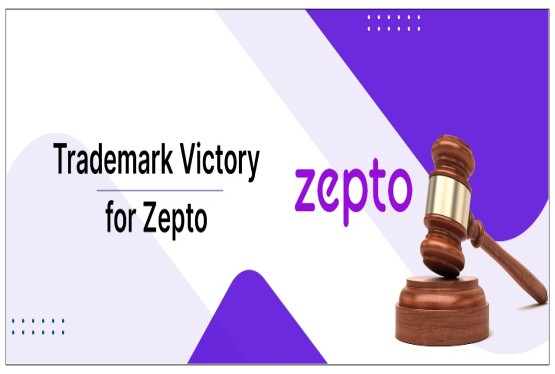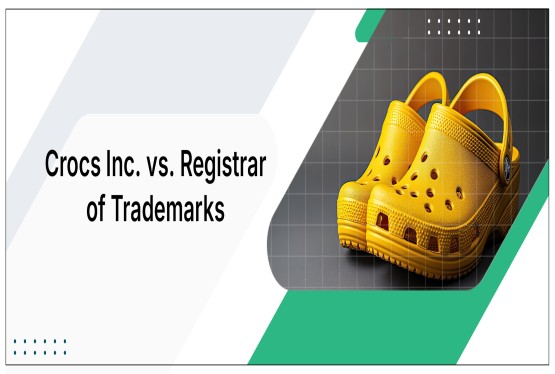When filing a trademark application, the applicant must clearly specify the goods or services they trade in as well as the class of goods or services their proposed mark will cover. In that way, the proposed mark will be protected only for those goods or services that are listed in the trademark application by the applicant.
A misclassification can lead to undesirable consequences. If a wrong class is selected, the trademark may not provide the intended protection for the applicant's actual goods or services, and the application might get rejected or refused as well. Moreover, if the specification of goods or services mentioned in the application is too wide or vague, a trademark objection may be raised by the Trademark Examiner. Hence, the selection of appropriate trademark class or classes requires careful consideration of the nature of the goods or services. In this article, we will discuss if any changes can be made both before and after registration of a trademark in respect to the class & specification of goods or services.
What is trademark modification?
As the word ‘modification’ suggests change, alteration, or amendment; a trademark modification means to rectify any clerical error/s or make significant changes such as change of applicant’s name, address for service, modification of registered trademarks or class & specification of goods/services. For any such alteration or modification, a request can be made by the applicant both before and after registration of a trademark. When it comes to trademark classes, modifications are possible but subject to certain rules and limitations.
Scenarios for Class Modifications
Any error/s in trademark class selection can occur in two scenarios:
1. Errors Made by the Applicant: It is possible that the applicant might have chosen the wrong class or classes for their trademark application. This could be due to a misunderstanding of the classification system or a simple mistake during the application process.
2. Errors Made by the Trademark Authority: In some cases, clerical errors might occur in recording or processing the classes for a trademark application.
In either case, the process for modification or alteration depends on whether the trademark application has already been registered or not. Any amendment that could be considered a substantial alteration is generally not permitted. However, certain changes to the specification of goods and services are allowed such as applicants or trademark proprietors can request the removal of specific items from their list of goods or services within a class, or can make a request to narrow down or limit the scope of goods or services within a class.
Pre-Registration Modifications:
Pre-Registration Modifications are changes or alterations made to a trademark application before it is officially registered. For pre-registration modifications, applicants can use Form TM-M. Form TM-M is generally used to make minor alterations such as clerical or typographical errors to the application while it is still in the examination stage. Supposedly, if the application is made for registration of trademark in respect of goods or services falling in more than one class, and some items mentioned in the specification of one particular class don’t fall in that class but fall in some other class, the applicant has the option to request for an amendment in the application. The steps for this process are as follows:
-
File the Application: The applicant has to file for such change through Form TM-M with the Trademark Registry. Form TM-M is divided into three parts: A, B, and C. Part B requires to opt for ‘Purpose of Request’, the applicant can request ‘for correction of clerical error or for amendment under rule 37.’
-
Submission and Fee Payment: The completed application must be submitted to the Registrar of Trademarks, along with the prescribed fee of INR 1000 for physical filing; and INR 900 for E-filing.
-
Review and Advertisement: The Registrar reviews the request for an amendment. He may hear the applicant as deemed fit. The Registrar will then make a decision to approve or refuse the amendment request.
If any goods or services could fall into multiple classes but is properly classified in the nominated class, it is assumed that the applicant only wants it in the nominated class. No further inquiry will be made, and no additional classes will be added in this case.
Post-Registration Modifications:
Post-Registration Modifications are changes or alterations made after a trademark has been successfully registered, i.e., registered trademarks. For post-registration modifications, applicants can use Form TM-P. Form TM-P is used to make request for post-registration changes in respect to the trademarks such as change of applicant’s name, address for service, or description of registered proprietors, modification of registered trademarks, or any other similar alterations.
Any amendment to the trademark which may be considered a substantial alteration is not at all permitted. Though one cannot apply for an addition of new goods or services, as it will require a new trademark application, an application to strike out any or some goods or services for which a trade mark is registered can be made. The steps for this process are as follows:
-
File the Application: The applicant has to file for such change through Form TM-P with the Trademark Registry. Form TM-P is divided into three parts: A, B, and C. Part B requires to opt for ‘Purpose of Request’, the applicant can request to ‘strike out goods or services from the register.’
-
Submission and Fee Payment: The completed application must be submitted to the Registrar of Trademarks, along with the prescribed fee of INR 3000 for physical filing; and INR 2700 for E-filing.
-
Review and Advertisement: The Registrar reviews the application. If found in order, the application is advertised in the Trademark Journal.
-
Opposition Period: A three-month trademark opposition period commences from the date of advertisement. During this time, any person may file a notice of opposition, citing appropriate reasons. If an opposition is filed, the applicant must file a counterstatement within two months. The Registrar will then notify both parties of the first date of hearing.
-
If no opposition is filed, the Registrar may hear the applicant as deemed fit. The Registrar will then make a decision to approve or refuse the application.
-
Upon approval, the Registrar thereby makes the necessary changes in the register and publish a notification in the Journal regarding the same.
The process of filing a trademark application requires attention, and should be done with utmost precaution, particularly when specifying the goods or services and their corresponding classes. Misclassification may lead to unwanted circumstances, including inadequate protection or even rejection of the application. The Trademark Examiner may also object if the specification is overly broad or vague. Therefore, it is strongly advisable to seek professional assistance from experienced trademark attorneys or agents while filing a trademark application.
At Compliance Calendar LLP, our approach is to help startup founders in protecting their brand name/logo/design and ease the trademark registration process end-to-end for them.
Frequently Asked Questions:
1. Can I remove goods or services from my registered trademark?
Yes! You can remove goods or services in respect of a registered trademark by making a request to Trademark Registry to strike out goods or services using Form TM-P.
2. Can I expand the scope of my trademark protection through modifications?
When your mark is in the application stage, you may request to add classes. However, post-registration, you can only narrow the scope by removing goods or services.
3. Can I add new goods or services to my registered trademark?
No, adding new goods or services to a registered trademark requires filing a new trademark application.
4. What is the fee that I will have to pay for trademark modifications?
The fees for trademark modifications depend on the stage of the trademark application and the type of filing. For Pre-Registration Modifications, you can make an application through Form TM-M. The prescribed fee for Form TM-M is INR 1000 for physical filing, and INR 900 for E-filing.
Similarly, for Post-Registration Modifications, you can make an application through Form TM-P. The prescribed fee for Form TM-P is INR 3000 for physical filing, and INR 2700 for E-filing.
5. What happens if I choose the wrong class for my trademark?
If discovered before registration, you can request a modification. If after registration, you may need to file a new application for the correct class.
6. How can Compliance Calendar LLP assist in this process?
At Compliance Calendar LLP, we are here to simplify your trademark protection processes. Our expert Trademark Agents and Attorneys begin with a quick call to understand your specific situation and needs. We then guide you through every step of the process, from selecting the right form to submitting your request to the Trademark Office.
You can contact us at info@ccoffice.in or WhatsApp/Call at 9988424211, if you need any assistance with filing for any modification in class & specification of goods or services in respect of your trademark application.






























_(b)_of_the_Trademark_Act,_1999_(1)_crop10_thumb.jpg)



_crop10_thumb.jpg)




























_crop10_thumb.jpg)
_crop10_thumb.jpg)






_crop10_thumb.jpg)








_crop10_thumb.jpg)
_crop10_thumb.jpg)



_crop10_thumb.jpg)





























_crop10_thumb.jpg)
















_crop10_thumb.jpg)






_crop10_thumb.jpg)












































































































































_crop10_thumb.jpg)




































_crop10_thumb.jpg)












_crop10_thumb.jpg)






















